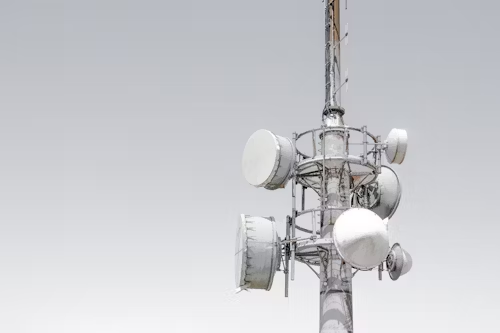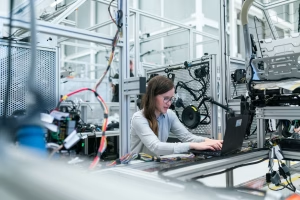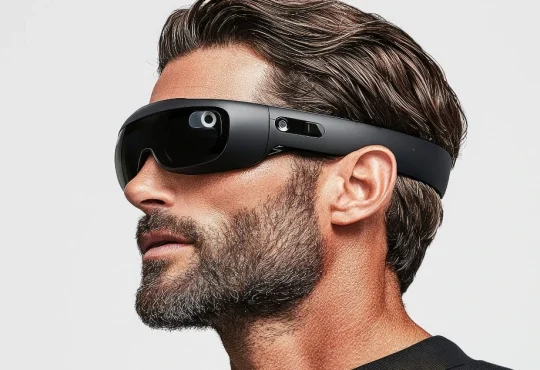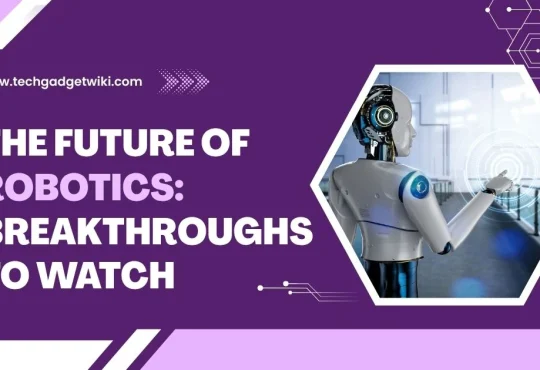
Technology permeates nearly every aspect of modern life, from the smartphones we use for communication to the advanced machinery powering industrial production. With diverse technological innovations, each designed to streamline various tasks and processes, understanding their functions is key to harnessing their potential for improving daily life. By exploring common types of technology and their applications, individuals can gain insights into how these tools can enhance efficiency and productivity across different fields, fostering an appreciation for the impact of technology on society and potentially inspiring career paths in technological fields.
Technology Guide: Deciphering the Fascinating 6 Main Types!
What is Technology?
Technology encompasses applying scientific knowledge for practical purposes, with various forms emerging from efforts to streamline processes and innovate. Continuously evolving, technology primarily seeks to simplify tasks and enhance efficiency, exemplified by advancements like the Internet, which revolutionizes communication by making it more accessible and efficient.
Main Types of Technology:
Technology can be broadly categorized into six main types, each serving distinct purposes across various fields. These categories include communication, electrical, energy, manufacturing, medical, and transportation. Each category has numerous examples of technology, illustrating their diverse applications and contributions to society.
Communication Technology
Communication technology encompasses all tools and methods used for exchanging information between individuals. Historically, this has included innovations like the Morse code and the telegraph. In contemporary times, notable examples of communication technology include smartphones, email, social media platforms, and video conferencing software, which facilitate rapid and efficient communication across vast distances.
- Television
Television is a medium through which audio and visual content is transmitted to viewers via signals. It serves various purposes: entertainment, news dissemination, advertising, and education. Typically, televisions receive signals through a cable wire connection or over the Internet, which dictates the content displayed. Digital signals play a crucial role in compressing audio and visual data, optimizing bandwidth usage, and ensuring the seamless delivery of high-definition content.
- Internet
The Internet is regarded as one of the most influential communication technologies globally. It facilitates real-time interaction among individuals worldwide through written, audio, and video messages. Businesses, charities, governments, and individuals utilize this powerful tool for various purposes, including marketing, communication, information dissemination, social interaction, and knowledge sharing.
- Cellphones
Cell phones represent a significant advancement from traditional telephones, facilitating the transfer of text, audio, and video content over the Internet. With cell phones, individuals can communicate globally, access information, capture multimedia, engage in social media interactions, and fulfill professional responsibilities through various applications. Moreover, mobile devices now serve multifaceted purposes such as navigation, health monitoring, financial transactions, and seamless integration with other smart devices, amplifying their utility in modern life.

Electrical Technology
Electrical technology, with electricity as a fundamental energy source, underpins numerous modern innovations. Many technologies, from household appliances to industrial machinery, rely on electricity for operation. Electrical technology includes lighting systems, heating and cooling systems, telecommunications equipment, and electronic devices such as computers and smartphones. Moreover, advancements in electrical engineering continue to drive innovation across various sectors, enhancing efficiency, convenience, and functionality in everyday life.
-
Computers
Computers operate by rapidly manipulating electrical currents driven by binary code’s presence or absence of current. They interpret binary instructions to perform tasks like arithmetic, logic operations, and language translation. Besides storing data and executing software, computers excel in complex computations, scientific analyses, and machine learning applications, contributing to the advancements of diverse fields.
-
Circuitry
Circuitry is a group of electrical components designed to carry out specific tasks. One example is a computer processor, which translates electrical signals into executable computer code. Similarly, audio amplifiers in speakers boost electrical signals to produce sound. These circuits are integral to various modern devices, including computers, remote controls, cell phones, and household appliances.
-
Artificial Intelligence (AI)
AI encompasses computer systems that autonomously make decisions and take action, influencing numerous facets of daily life. For instance, navigation apps use AI to analyze traffic data for optimal route suggestions, while search engines employ AI to customize user results. Machine learning algorithms in AI identify patterns and trends, aiding decision-making, and natural language processing enables functions like chatbots and voice assistants. Furthermore, AI’s role in image processing and deep learning is pivotal, enabling medical imaging, facial recognition, and augmented reality applications.
-
Software
The software comprises instructions and codes to guide computers in performing specific tasks. Developers create and distribute software to improve user experience, streamline processes, and enhance efficiency. For instance, word-processing software simplifies document creation and editing compared to traditional typewriters. Similarly, applications like Chrome allow users to browse and interact with the Internet seamlessly.
-
Audio and Visual Technology
Audio and visual technology encompasses devices like cameras, microphones, and projectors. These devices employ sensors to convert analog signals, such as light and sound, into digital data. Their primary function is to capture and present audio and visual content to users. Audio and visual technology often seamlessly integrate with other technologies like cell phones, providing functionalities like camera capabilities. These devices utilize embedded systems and software to manage and improve audio-visual features, including autofocus, image stabilization, and advanced audio processing.
Energy Technology
Energy technology encompasses various methods and devices designed to generate, store, and transmit energy for diverse purposes. Some common examples of energy technology include solar panels, wind turbines, batteries, and power grids. These technologies are crucial in meeting energy demands, reducing reliance on fossil fuels, and promoting sustainability. Energy technology continues to evolve through ongoing research and innovation, offering solutions to address global energy challenges and create a more sustainable future.
-
Solar Panels
Solar panels utilize photovoltaic cells to convert sunlight into electricity, offering a sustainable energy solution for various applications. These panels are commonly used to power residential and commercial buildings, outdoor lighting, and water heating systems. As a renewable energy source, solar panels contribute to reducing carbon emissions and mitigating environmental impact, making them increasingly popular for clean energy generation.
-
Wind Turbines
Wind turbines harness the kinetic energy of the wind to produce electricity. They are often positioned in open plains or offshore locations with strong winds. As the turbine’s propellers rotate, they generate energy, which can be stored in batteries or transmitted directly to power various applications. This renewable energy source offers a sustainable solution for electricity generation, contributing to reducing reliance on fossil fuels and mitigating environmental impact.
-
Batteries
Batteries serve as energy storage devices, powering various technologies like television remotes, watches, vehicles, and solar panel setups. They come in multiple sizes, from small ones for gadgets to larger ones for vehicles or extensive solar installations. Recent advancements include solid-state batteries, offering increased energy density and quicker charging, and progress in recyclable and biodegradable battery components, enhancing sustainability in energy storage solutions.
Mechanical Technology
Mechanical technology, rooted in the application of engineering principles, serves as a pivotal tool in enhancing task efficiency across various domains. Through the utilization of machinery, individuals harness the power of mechanical technology to streamline processes and achieve optimal outcomes. Common manifestations of mechanical technology span a diverse spectrum, encompassing mechanisms such as:
-
Manufacturing Technology
Manufacturing technology is dedicated to enhancing the efficiency and cost-effectiveness of goods production. A prime illustration of this technology is the assembly line, which has significantly accelerated production rates. Its advantages include improved product quality, enhanced tracking and analysis systems, expedited shipping, and heightened employee safety. Notably, integrating predictive maintenance, facilitated by sensors, data analytics, and machine learning, has revolutionized maintenance practices, shifting towards proactive measures rather than reactive responses.
-
Heavy Engineering Technology
Heavy engineering technology facilitates the execution of complex construction tasks like bridge building and tunnel excavation with greater precision, accuracy, and safety. Incorporating robotics into heavy engineering has streamlined processes such as bricklaying and concrete pouring. Integrating innovative construction materials equipped with embedded sensors also enables structural health monitoring and predictive maintenance, enhancing overall efficiency and safety standards.
Medical Technology
Medical technology enhances people’s quality of life through various advancements. Examples include innovative medical devices like pacemakers and artificial limbs, which restore mobility and functionality to individuals with disabilities. Additionally, diagnostic tools such as MRI machines and CT scanners enable early detection of diseases, leading to better treatment outcomes. Moreover, pharmaceutical advancements in drugs and vaccines contribute to the prevention and management of various illnesses, ultimately promoting overall health and well-being.
-
Diagnostic Technology
Diagnostic technology provides vital information to healthcare professionals about patients’ health, employing tools like thermometers, MRIs, X-ray machines, electrocardiographs, and stethoscopes. These tools aid in diagnosing conditions, assessing injuries, and planning treatments without invasive procedures. Enhancing diagnostic accuracy and facilitating prompt interventions, these advanced technologies enable well-informed decisions based on comprehensive patient assessments, ultimately improving patient outcomes.
-
Pharmaceutical Technology
Pharmaceutical technologies play a vital role in understanding the effects of various substances on human health, utilizing advancements such as nanotechnology, microenvironments, and artificial organs. Researchers leverage these technologies to develop new prescription drugs to cure or reduce the prevalence of harmful diseases. Integrating AI and machine algorithms accelerates the identification of novel compounds, streamlining the drug development process. For instance, AlphaFold employs deep learning algorithms to predict the 3D structure of proteins, a critical step in drug discovery efforts.
-
Surgical Technology
Surgical Technology empowers surgeons to execute intricate procedures with precision and efficiency. Recent innovations in this field include smart surgical glasses that provide surgeons with essential information directly in their line of sight and remote robotics, enabling surgeons to perform operations with enhanced accuracy from a distance. These advancements benefit various surgeries, ranging from routine procedures like appendectomies to more intricate spinal or brain surgery interventions.
-
Monitoring
Healthcare providers increasingly turn to technology for real-time monitoring of patients’ health and well-being. Smartwatches offer a familiar example, tracking biometric data like heart rate and sleep patterns. Advanced monitoring extends to implanted devices, offering healthcare professionals deeper insights. Biometric sensors and skin-adherent patches enhance monitoring capabilities, allowing continuous tracking of vital signs such as heart and respiratory rates for comprehensive patient care.

Transportation Technology
Advancements in transportation technology have vastly improved travel convenience and efficiency, spanning innovations like automobiles, trains, airplanes, ships, and bicycles. These technologies have revolutionized long-distance travel, enhancing speed, safety, and accessibility. Moreover, emerging technologies such as electric and autonomous vehicles hold promise for transforming transportation, offering greener and more sustainable mobility options in the future.
-
Global Positioning System (GPS)
GPS, or Global Positioning System, uses satellites orbiting Earth to determine locations on the planet’s surface precisely. By capturing signals emitted by these satellites, GPS receivers in ground-based devices enable accurate location triangulation. This technology facilitates real-time navigation, object tracking, and precise timekeeping, and it’s integrated into devices like smartwatches and tracking systems used by organizations and governments for efficient fleet management and asset tracking.
-
Flight Technology
Flight technology has advanced significantly over time due to materials, aerodynamics, and engineering innovations. It’s pivotal in aviation, from aircraft construction to navigation systems, ensuring safety and precise navigation with advancements like GPS and radar systems. In space flight, innovations like reusable rocket technology aim to reduce costs and enhance sustainability, promising a more efficient approach to space exploration.
-
Vehicular Technology
Vehicles have evolved to become faster, safer, and more fuel-efficient, with improved comfort and entertainment features. Advancements include enhanced engine efficiency, safety measures like airbags, and entertainment systems. Additionally, innovations have led to autonomous driving, electric and hybrid vehicles, and connected cars. Ongoing research focuses on advanced materials to enhance fuel efficiency and reduce vehicle weight for a sustainable transportation future.
Conclusion:
Technology has become ingrained in modern life, influencing everything from communication to industrial production. Understanding various technological innovations and their applications is crucial for leveraging their potential to enhance daily life. By exploring common types of technology, individuals can gain insights into how these tools improve efficiency and productivity across different fields, fostering an appreciation for technology’s impact on society and potentially inspiring career paths in technological fields.





